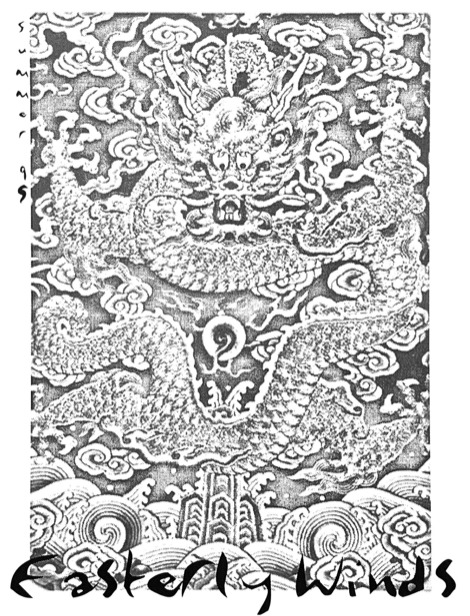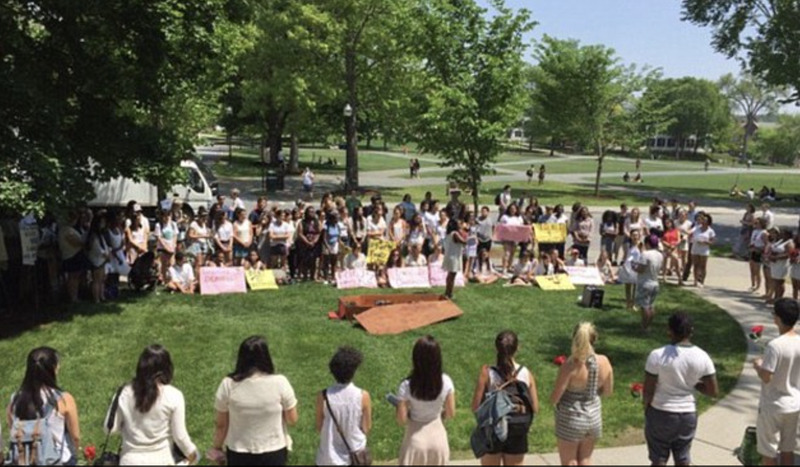Artistic and Symbolic Expressions of Activism
By Anh-Ton Nguyen '26, Divik Verma '26, Lauren Lim '26, Lin Lin '26
“Maybe there were some performances prior to when we started doing it, probably not as consistently.”
Andrew Chu ‘01, Far Off Broadway
“I was not that pleased with the way the school was handling diversity issues, particularly with Asian American students, so that was sort of my way of getting a lot of that stuff out there.”
Timothy Sun ‘06, Asian Americana
“I don’t know that I ever really thought about my work then as like being an Asian American, I was just kind of doing it, but obviously that’s just kind of always present.”
Shivani Bhatia ‘13, Soul Scribes
“I think we might have been the first East Asian majority theater production.”
Naomi Lam ‘21, Family Style
At Dartmouth, decades of Asian American poets, playwrights, and performers have inherited and withstood the same institutional barriers. While each iteration of artists has been informed by unique social and historical contexts, notable consonances arise when placing their crafts in conversation with each other. One apparent phenomenon is that Asian American artistic expression is fluctuating, with different peaks and troughs through the years. Eras of passionate creation and lively community are followed by quiet periods of more disparate Asian American campus life and more individualized art. To this end, a salient challenge faced by Dartmouth’s Asian American community is that of legacy and institutional memory—when the maximum lifetime of any given Asian American student on campus is about 4 years, how can Dartmouth foster a lasting creative community, let alone a lineage of Asian American artists?
In face of historical racial formations such as the Model Minority and Perpetual Foreigner, which invisibilized Asian American expressions, resisting erasure is a radical political project. To this end, in order to intervene in Dartmouth’s racial politics of forgetting, we offer the lens of palimpsest as a tool to recuperate our forgotten pasts and take up space for our collective futures.
Coined in the mid-16th century, the term ‘palimpsest’ refers to a document that has been effaced and reinscribed such that the text that it currently shows is not the text that was originally written, yet traces of the original remain. In this context, the term was often used to describe medieval European manuscripts, which were commonly palimpsestic due to the rarity of parchment and vellum—instead of procuring new paper, medieval scribes would often erase and repurpose old manuscripts. In 1845, English essayist Thomas De Quincy realized the palimpsest’s figurative potential in his eponymous essay, arguing that the human mind is palimpsestic due to the iterative nature of remembering and forgetting:
Everlasting layers of ideas, images, feelings, have fallen upon your brain softly as light. Each succession has seemed to bury all that went before. And yet in reality not one has been extinguished.
Since Quincy’s inaugural essay, technological and sociological innovations have further informed the metaphor of the palimpsest. In textual studies, modern advancements in chemical and optical imaging have demystified the effaced contents of physical palimpsests, revealing the pasts invisible to the naked human eye. Simultaneously, the metaphor of the palimpsest gained currency in critical fields such as media studies and ethnic studies, deployed throughout the 90’s and beyond along axes of queer and postcolonial critique. Today, the term has been thoroughly wrested from its European roots, appearing in diverse texts from journals to zines.
The history of Asian American artists at Dartmouth is largely untold. Between defunded community programming, quickly rotating professors and faculty, a lack of institutional and mainstream campus support, and the inevitable act of forgetting, Dartmouth has never been an enduring home for the Asian American community. The result of this has been a decades-long systemic process of erasure, leaving behind only disparate, unorganized traces of Asian American art, presence, and experience. Yet, by understanding our forgotten history as a palimpsest, we remember that even when effaced, the works and productions of our predecessors inform the work that we do today. Studying the archives and the reasons why they are incomplete, we find clear parallels to the College’s treatment of Asian American students today, as well as students’ current responses and resistance to the College. By filling in the minoritized blanks of Dartmouth’s white, heteropatriarchal history, we choose to remember Dartmouth’s inconvenient legacies of racism and discrimination. Informed by systemically forgotten pasts and imagining radical, progressive futures, the palimpsest of Asian American art at Dartmouth is here to stay.


